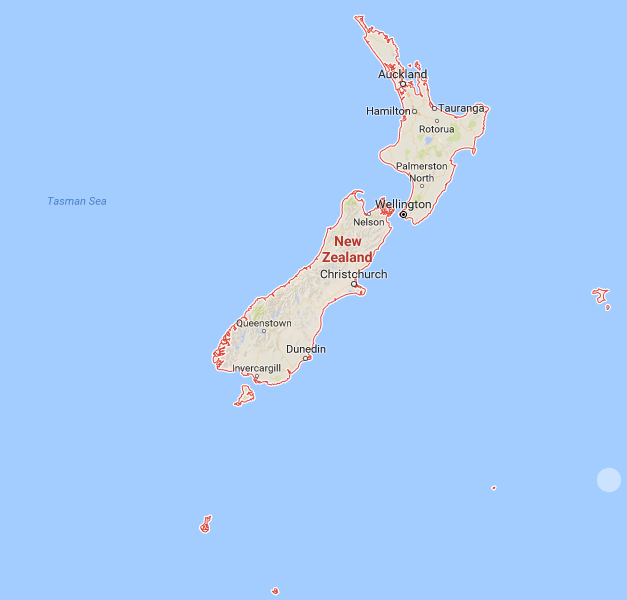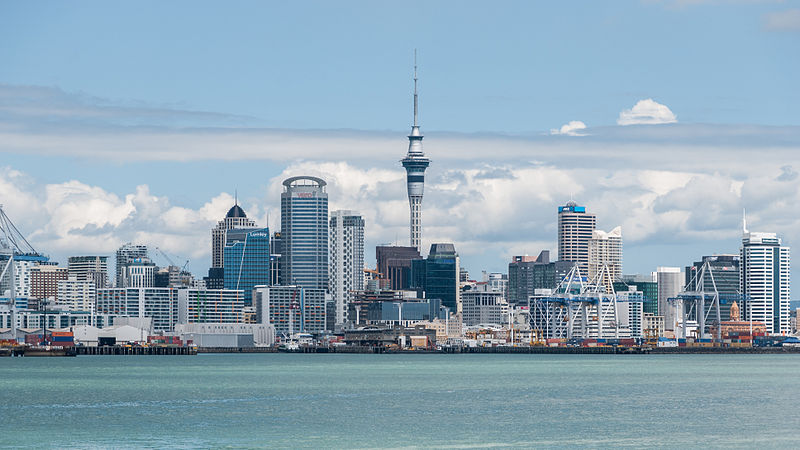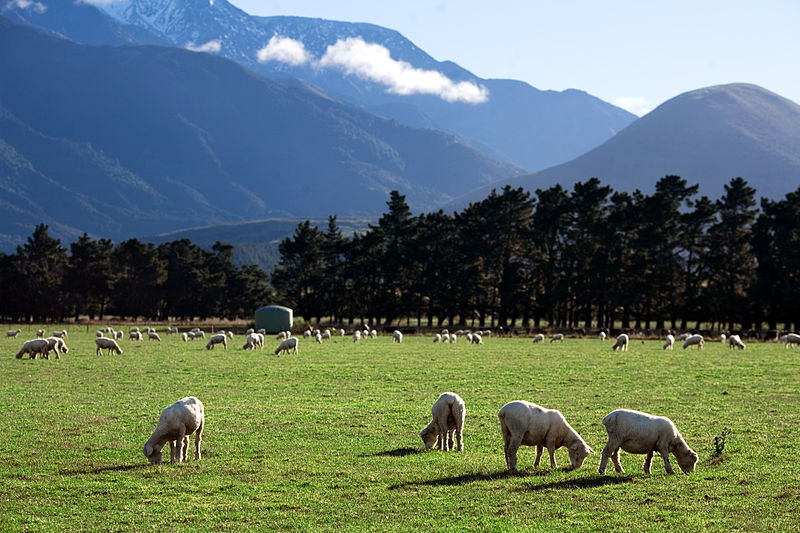



New Zealand is located in the south west Pacific near Tasmania sea. It is 1500 km east of Australia and 1000 km south of New Caledonia., Fiji, and Tonga. Two main islands comprise the New Zealand. The two main islands are North Island and South Island. Other important island is Stewart Island. Some small islands are there along with these bigger islands. The north island has mountain ranges running through the middle of the island. Gentle rolling lands are there on both sides of the mountain ranges. The Southern Alps mountain ranges are located in the in the south island. The rolling lands of Otago and south lands are located to the east of the Southern Alps. The Canterbury plain is important part of south island. New Zealand was part of the Gondwana land. The islands of New Zealand were separated from the Gondwana land over 85 million years ago. The Pacific plate and Australian plate pushed each other near New Zealand. Tectonic activities and their evidences are still found there. Hot springs are found in many places in New Zealand. Mud pools and geysers are also found in some places. A number of glaciers are found in the mountains of south island. The largest glacier is the Tasman glacier near Mount Cook. Other important glaciers are the Franz Joseph glacier and the Fox glacier. Some of the accessible glaciers are located in the west coast of south island. The Marlborough sounds and Ford land mountains sunk into the sea water due to subduction activities. The land area of New Zealand is around 268021 sq. km. The coast line length is more than 15000 km. The north island has more plain lands, beaches and productive lands. The beaches are sandy and the sea is sallow along the stretches of beaches. The sea water is clean and good for swimming, surfing and cooling. One fifth of the land is covered by hills and mountains. the south island is covered by hills and mountain ranges. the vast Canterbury plain of the south island is a productive area. The human habitation was estimated to have been started between 1200 to1300 AD by Polynesian settlers. A Dutch explorer Abel Tasman found New Zealand in the year 642 AD. The present population of New Zealand is 45, 78,900. The language spoken by the people is English. Other Polynesian languages are also spoken by the local tribal population. The biggest city is Auckland and the capital city is Wellington. The currency is New Zealand Dollar.
New Zealand became a colony of British Empire in the year 1840 by the treaty of Waitangi. It has a mild temperate climate with long hours of sun shine. New Zealand receives high rainfall and moderately high rain fall. The warmer months are January and February. The coldest month is July. The average summer temperature is between 20 to 30 ‘C. The winter temperature goes down up to 10 C. The summer season is between December to February. The autumn is from March to May. The winter is from June to August. The spring is between September to November. The sun shine is very strong between 10 am to 4 pm in the summer. It may burn the skin, if exposed for prolonged period. Snow fall is regular in winter months in the mountain ranges and peaks. Eve plain areas receives snow fall in the winter season. The people of New Zealand adopted the Parliamentary form of Government. The parliament is unicameral and election is held every 5 year. Queen is the head of the State. She is represented by the Governor General. Prime minister is the head of the government. Councils of ministers for administrative reason the state is divided in to 11 regional councils and 67 territorial authorities. New Zealand has some beautiful cities like Auckland, Christ Church, Wellington, Hamilton, Napier--Hastings, Tauranga and Dunedine. Some urban centers like Palmerston north, Nelson, Rotoura, New Plymouth, Kapiti, Gisborne, Bienheim, Pukekohe, Timaru, and Waikato. Tourism is a major activity in New Zealand. The natural surroundings, forests, water bodies and beaches provide scope for arrival of tourists. Important destinations are Bay of Islands, Auckland, Cormandel, and Waitomo caves, Rotura, East coast, Taupo, Napier and Wellington. These are in the north Island. The places of interest in the south island are Abel Tasman, Kaikoura, Christ Church, Dunedine, Queens town, Mount Cook and Punakaiki
The transport system in New Zealand is developed. and managed properly. The road networks connect the important cities and towns in New Zealand. Railway network is established in north and South Island. The cities and urban centers are linked with railway connectivity. Ferry services are there between different islands. Six international airports are operating flights to other parts of the world. The important airports are Auckland, Wellington, Christchurch and Hamilton. New Zealand developed its economy based on agriculture, horticulture, diary and wine production. It is a major exporter of dairy products, meat, wine and processed agriproducts. Export of wool, fruits, fishes and mineral products is also contributing to the economy of New Zealand.
Major trade partners of New Zealand are UK, Australia, USA, China, Japan and South Korea. Tourism is a major contributor to the economy of the country. Major industrial activities in New Zealand are aluminum, metal fabrication, food processing, wood work, paper, mining and power generation. The income from north island is around 77 percent and income from South Island is 23 percent of the national income. Auckland city contributes 35 percent of the national income. Power generation is very important for New Zealand. Power if produced from hydro projects, wind mills, thermal power plants and geothermal power plants. The thermal power plants work on coal, oil and natural gas. available in its territory.
New Zealand is also rich in mineral resources like other countries of the region. It is rich in coal, oil and natural gas. Reserves. The important minerals like iron ore, limestone, silver ore, gold, copper ore, and ores of molybdenum. Building stones are also found in large areas. Large reserves of coal are found in Waikato, Taranaki, West coast, Otago and south land. More than 15 billion tons of coal reserves are estimated to be present there in New Zealand. Lignite deposits are also found along the coal deposits. Opencast and underground mining of coal and lignite is carried out. Annual coal production is more than 4 million tons. Half of the production is used in the thermal power plants and other industries. Remaining coal is exported to other countries.
Gold mining was started in New Zealand since 1852 AD in Otago and West coast. The Otago gold rush was started after reports of gold nuggets found on river beds spread to other places. The gold prospectors from California, Australia, South Africa and Canada came to Otago. During the prospecting of gold, the deposits of iron bearing sands were found in north Waikato region. Oil and gas are found in Taranaki basin. the fields are Kupuna, Maui, Kupe, Pokhara, Meek, Durango, Tuli and Mari. Crude oil is refined at Marsden point oil refinery. The oil requirement is met by importing some oil from other countries.